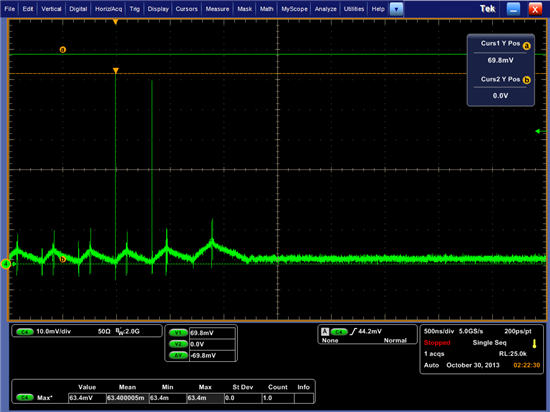I am using a tps62067dsg switcher to supply +1.5 volts for a DDR3 ram circuit. While evaluating I noticed
a random current spike occuring in the inductor. I am measuring the inductor (1uH) current by placing a 0.1
ohm resistor in series and reading the differential voltage on the oscilloscope with a 3.5 GHZ differential probe. My
load current is about 100mA. The inductor is rated at 4 amps saturation and appears to be acting linearly. The spike
is at the bottom of the ramp or the start of the ramp. What could cause this spike. I have attached a scope shot.
Thanks!



